Hostas care and growing guide: expert tips for these stunning foliage plants
Learn how to grow hostas so you can enjoy these colorful, shade-loving and attractive foliage plants in your garden

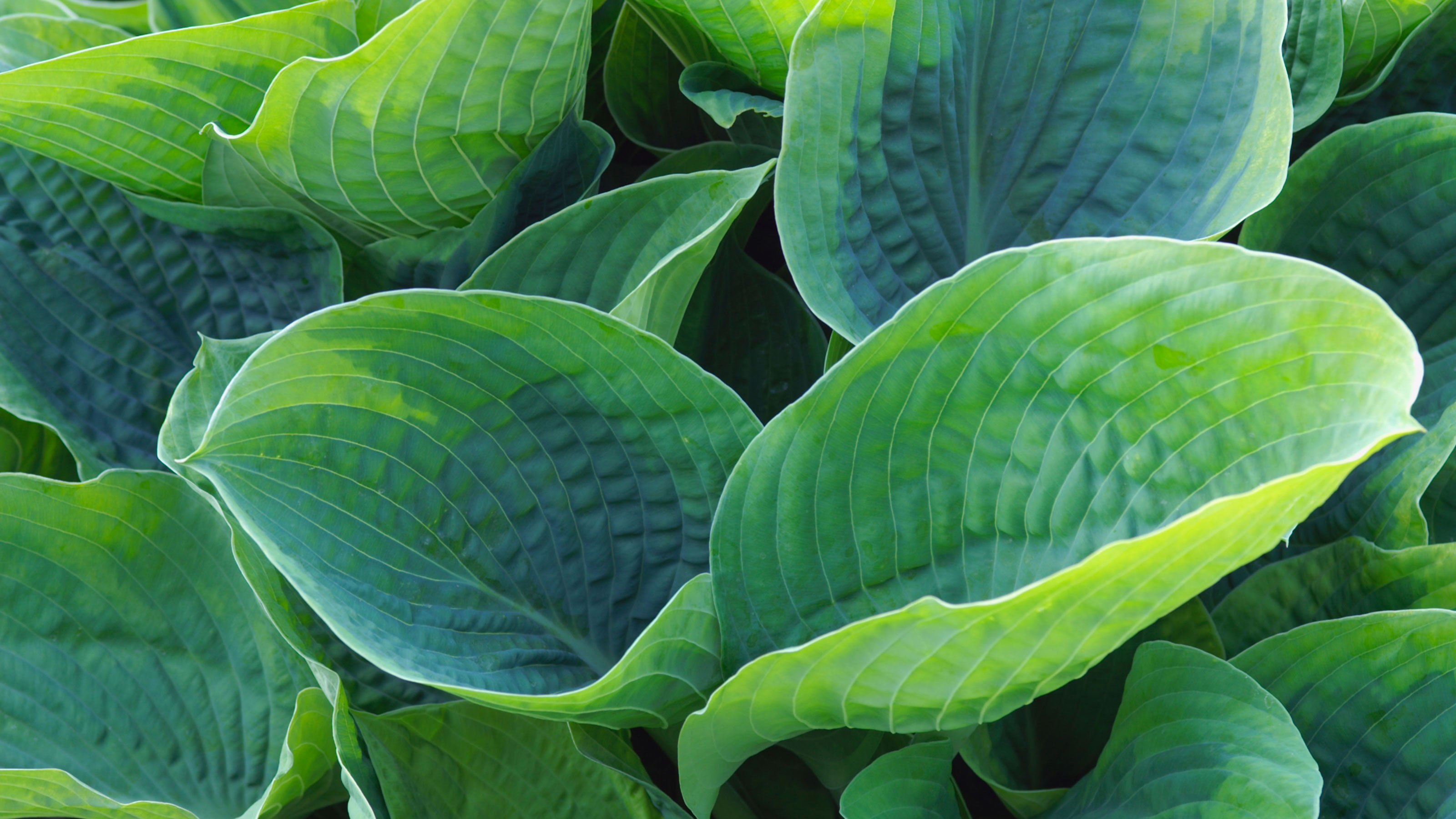
Hostas are cold tolerant hardy perennial plants grown mainly for their attractive leaves. From a tight, slowly expanding crown at soil level, pointed spring buds emerge and unfurl in spring. Later, in summer, many varieties produce upright stems that carry flared mauve or white trumpets that are sometimes scented.
The leaves are often heart-shaped, or narrower and more elliptical or even sword-shaped, and often feature a network of veins and may be strikingly puckered.
The colors, and patterns of colors, in the leaves are many and come in a huge variety. Colors may include combinations of blue and gray-blue and blue-green shades, a huge range of chartreuse, yellows and golds, and many with a gold or white splash in the center of the leaf or coloring the margins.
Varieties with red stems and red coloring in the leaves are becoming available. The coloring may change as the months pass before the first frost cuts the leaves down.
Learning how to grow hostas is a great way to create some interest in your flower bed ideas as they will add handsome foliage and drama to your planting scheme.
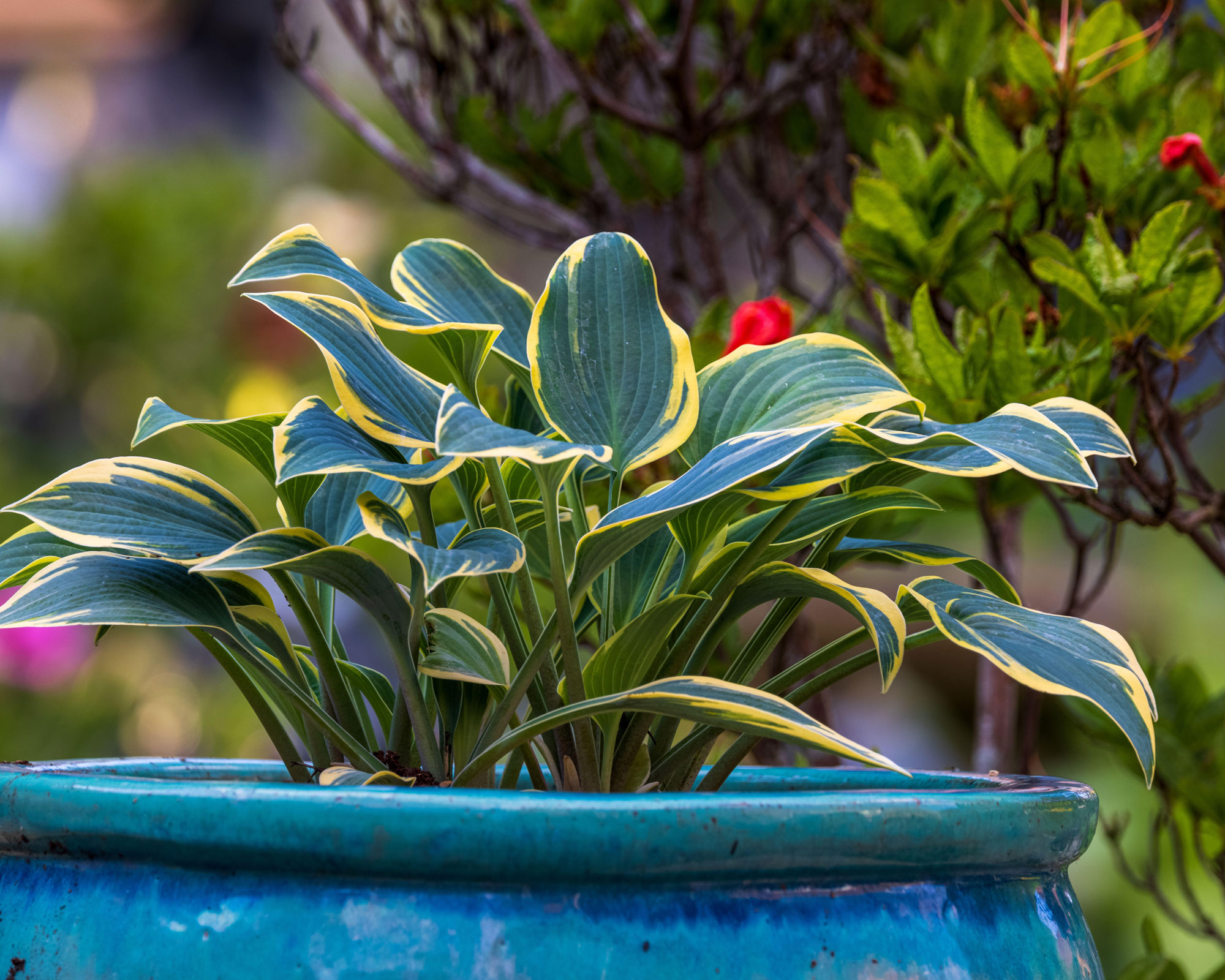
What are the main kinds of hostas?
Hostas can conveniently be grouped according to size and color.
In terms of size, they come in five sizes ranging from miniature to giant.
- Miniature hostas make mounds of foliage 8in (20cm) or less tall. ‘Paradise Puppet’ has wavy edged green leaves.
- Small hostas reach 9-14in (23-35cm) in height. ‘Blue Mouse Ears’ has pretty blue cupped leaves.
- Medium hostas make mounds 15-22in (38-56cm) high. ‘August Moon’ opens in lime- green, soon becoming rich gold.
- Large hostas are 23-29in (58-74cm) tall. ‘Guacamole’ has green leaves that develop a chartreuse center.
- Giant hostas are larger than 30in (76cm) high. ‘Blue Angel’ has broad, slightly wavy blue-green leaves.
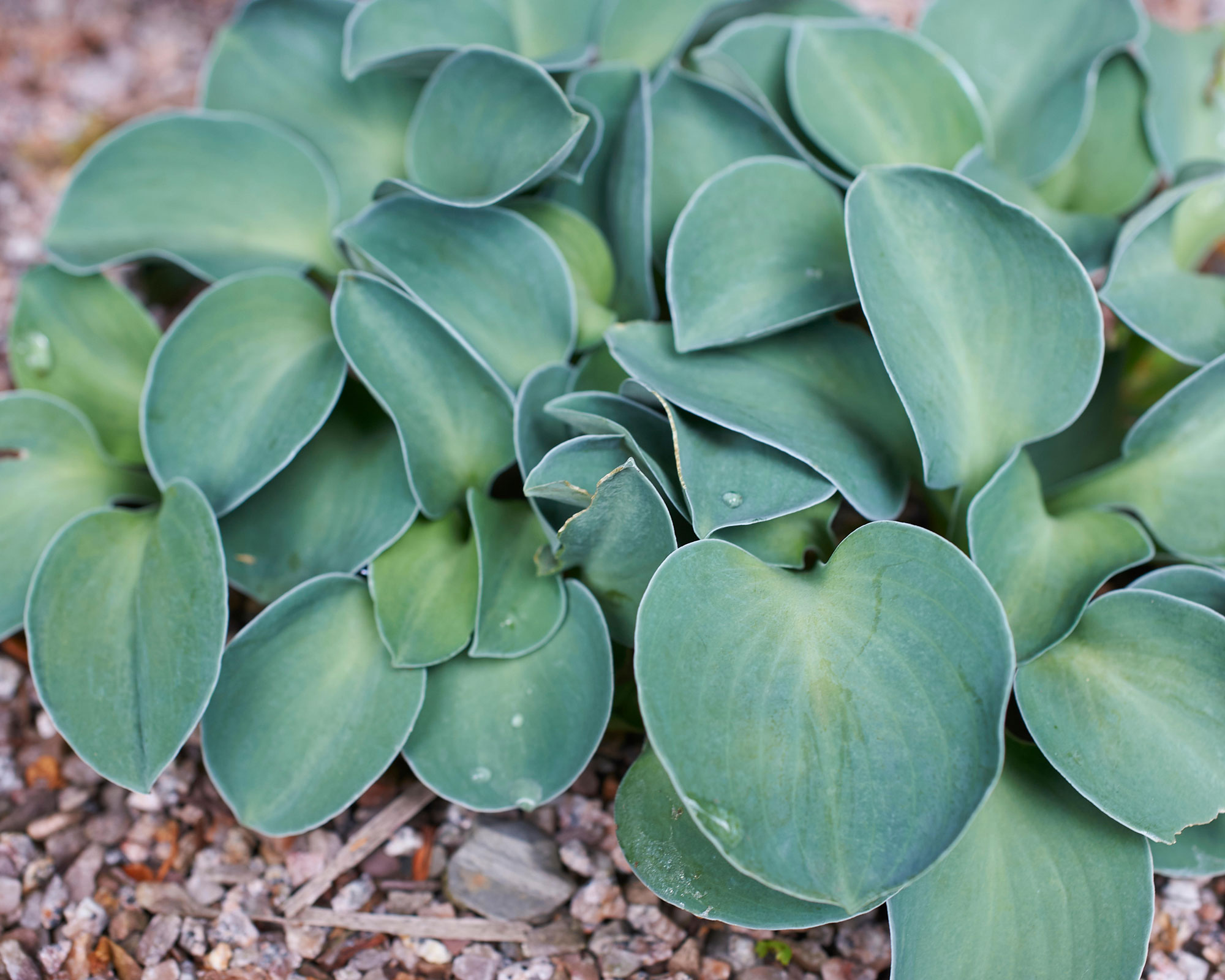
Hostas also come in a wide range of leaf colors and patterns.
- Yellow/gold leaves: ‘Piedmont Gold’ forms a slug-resistant mounds of old gold leaves (large).
- Green leaves: ‘Royal Standard’ has slightly wavy, bright green leaves and prolific white fragrant flowers (large).
- Blue leaves: ‘Halcyon’ makes a widely spreading mound of heart-shaped blue leaves (medium).
- Blue-centered leaves: ‘Frances Williams’ has corrugated blue green leaves with a yellow edge.
- Gold-edged leaves: ‘Wide Brim’ has oval green leaves that feature a creamy yellow margin (medium).
- Gold-centered leaves: ‘Touch of Class’ has vivid blue leaves with a sharp yellow central strip (medium).
- White-edged leaves: ‘Ground Master’ has oval green leaves with bright white edges (medium).
- White-centered leaves: ‘Pandora’s Box’ has rounded dark green leaves with a central white flash (miniature).

When and how to plant hostas
Hostas can be planted at almost any time as long as the soil is not frozen, waterlogged or parched. However early spring is the best time, ideally just before they start into growth. As the leaves unfurl the roots put on a spurt and as they suck nutrients from their new soil they will settle in quickly.
Because hostas are best left to mature into impressive specimen plants, and not split every three or four years, preparation should be more thorough than for most other perennials. For all except miniature varieties, prepare a site about 2ft (61cm) across and 1ft (30cm) deep, and add garden compost or your favorite soil improver.
Plant so that the crown of the your new hosta is at, or just a little below, the surrounding soil level. Water in with liquid feed.
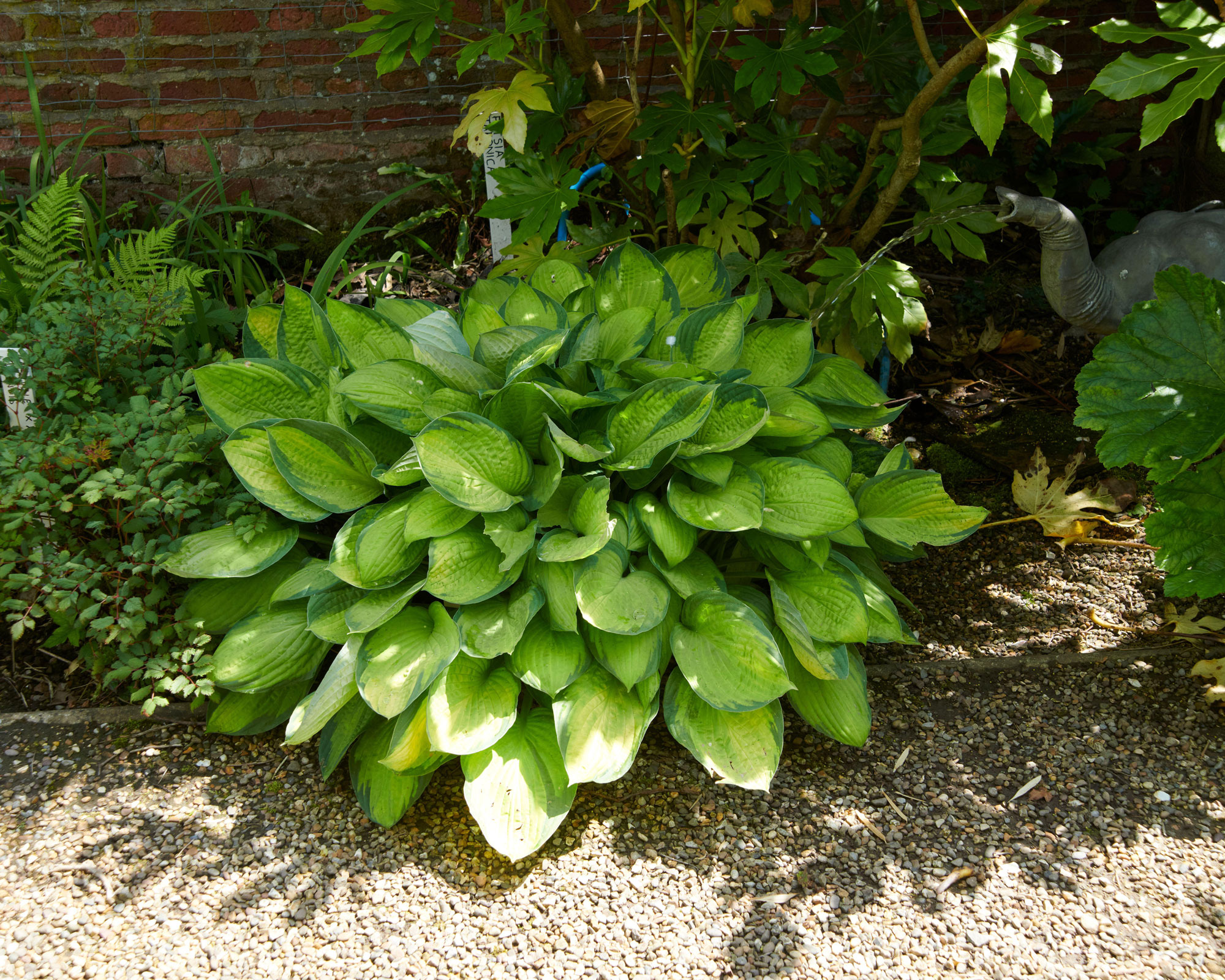
Where to plant hostas
Hostas are shade loving plants but exactly how much shade and how much sun they will take depends on the variety and how dry the soil is. In general, hostas will take more sun in cooler parts of the country and when the soil does not dry out. They don't do very well in hot, dry conditions.
Hostas can make impressive specimens in large planters as part of your container gardening ideas. Move the container into place before filling with compost and planting. Achieve a quick effect by using three plants of the same variety to fill one large pot.
Green-leaved hostas and blue-leaved hostas tend to do better in sun, varieties with yellow or white edges to the leaves do less well and tend to scorch. So it’s a case of right hosta variety, right place.
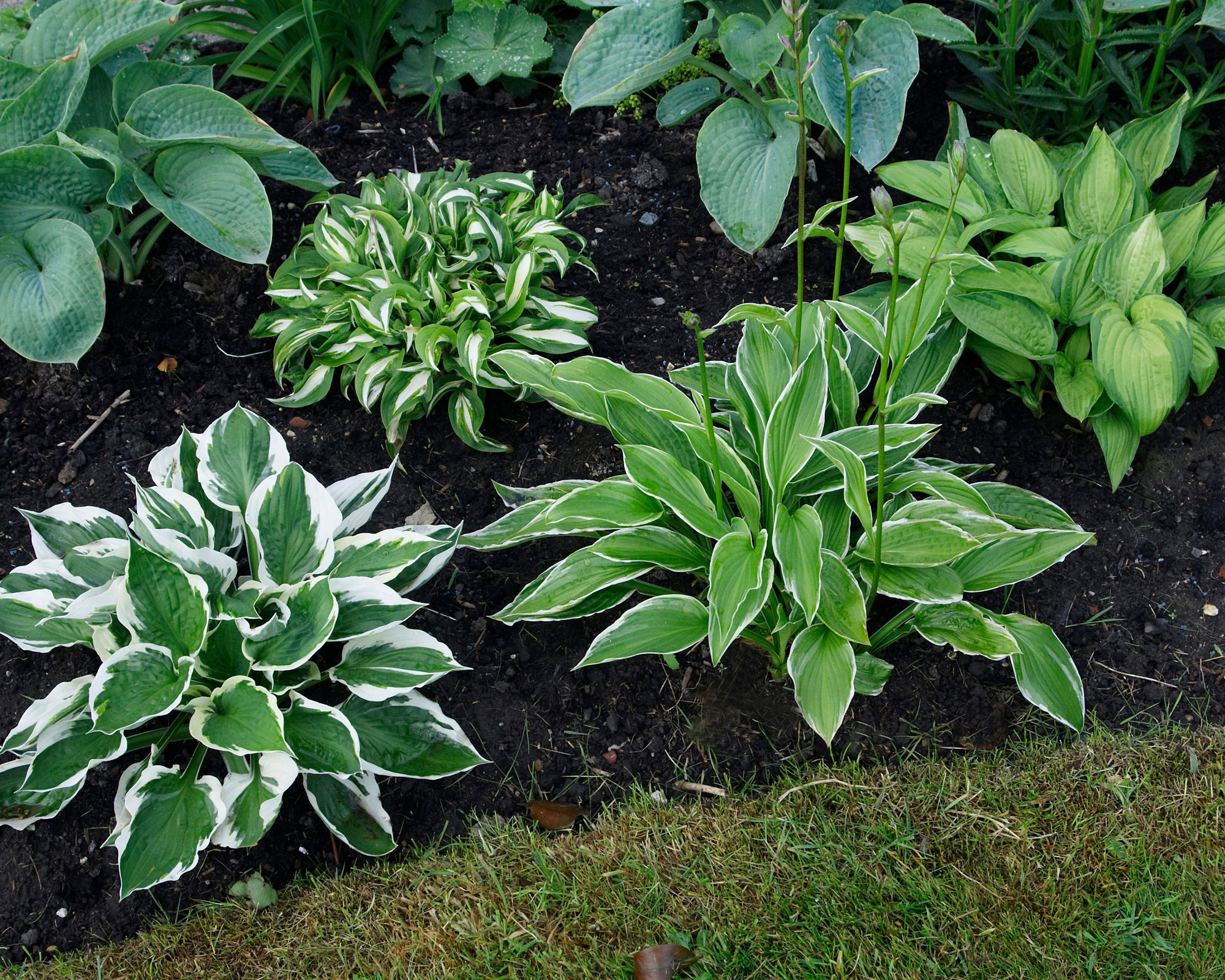
Hosta care tips
Hostas do not demand much care, but what little they do need is important.
- The young growth can be damaged by a sudden spring frost so check the forecast and, if frost threatens, find out how to protect plants from frost. If the leaves have started developing, cover the plants overnight with fleece or even old bedsheets.
- Keep hostas in planters consistently damp and, in very dry seasons, soak hostas in garden borders.
- Feed hostas in planters, and hostas in borders, with a general granular feed in spring or a two or three doses of liquid feed during the growing season.
- Deadhead flowering varieties by cutting off the flower stems at the base and when the chilly fall weather ruins the foliage, cut it all back to ground level.
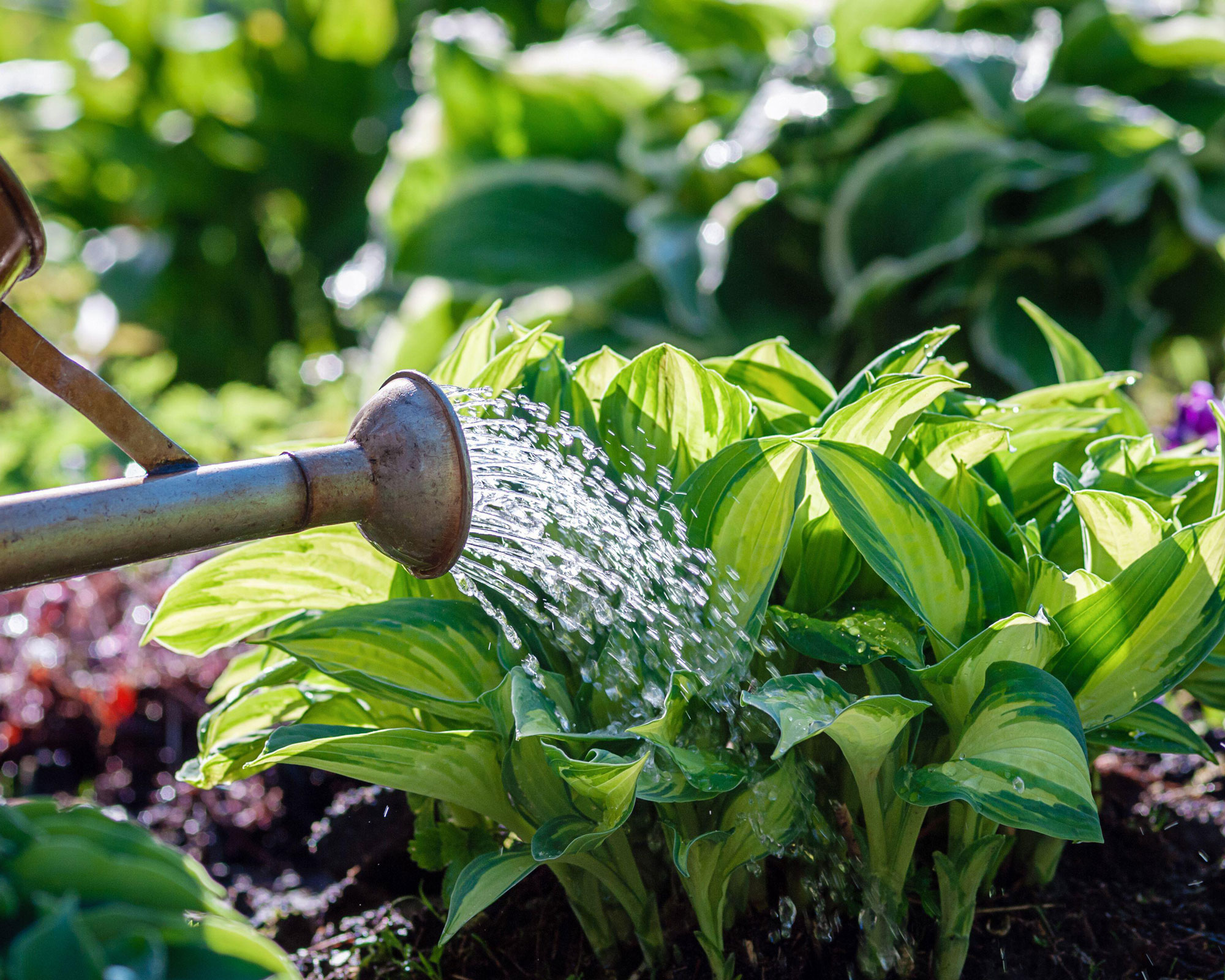
How to make more hostas
Hostas are propagated by dividing the clumps. In spring, just as your hostas are starting to grow, dig up the one you wish to divide and make sure you have an extra garden fork handy.
- Force one fork in vertically across the middle of the clump.
- Force in the second fork, back-to-back with the first one. You can then push the handles together to break the clump in two.
- Repeat the process on each half, and even again if the clump is a large one.
- Replant the pieces in enriched soil as soon as possible, making sure to work the soil in amongst the fat white roots.
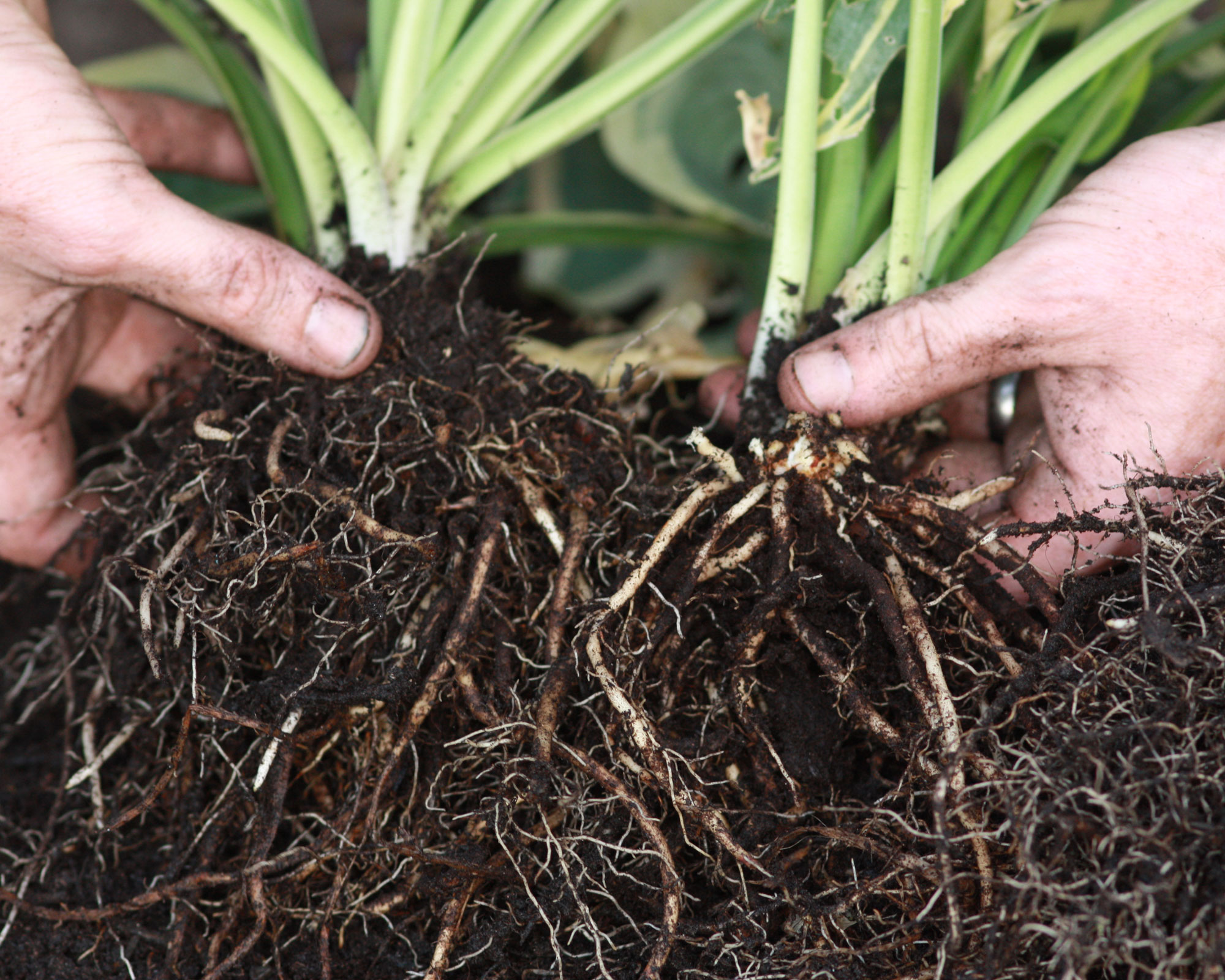
Hosta problems and how to solve them
There’s good news, and there’s bad news. Hostas suffer from few diseases and avoiding waterlogged soil conditions is the best prevention. There are, however, two important pests that trouble hostas: slugs and deer.
Slugs and snails can cause a great deal of damage in a short time. A whole clump can be ruined overnight. Choose only slug-resistant varieties, or employ your favorite slug treatment as a method for how to get rid of slugs. I suggest the organic Monterey Sluggo, available from Amazon.
'Our recent study found no reduction in slug damage from barriers made of copper tape, bark mulch, eggshells, sharp grit or wool pellets,' says The Royal Horticultural Society. 'Raking over soil and removing fallen leaves during winter can allow birds to eat slug eggs that have been exposed.
'Traps, such as scooped out half oranges, grapefruits or melon skins, can be laid cut side down, or jars part-filled with beer and sunk into the soil near vulnerable plants. Check and empty these regularly, preferably every morning.'
How do I fix the holes in my hosta leaves?
Almost all holes in hosta leaves are caused by slugs or snails eating the leaves or the emerging shoots but one part of the problem is sometimes overlooked. In spring, one bite into a bud by a hungry slug or snail turns into a gaping hole as the leaf develops and expands.
Holes in hosta leaves can also sometimes be caused by hail. In spring, in particular, when the foliage is still soft, the leaves can be reduced to shreds in just a few minutes.
Unless you happen to be away for the day you will usually know that there’s been hail but the other clue is that the damage will be fairly even over any hostas not overhung by trees. Slug damage is usually more patchy. Cut off the worst of the damaged foliage.
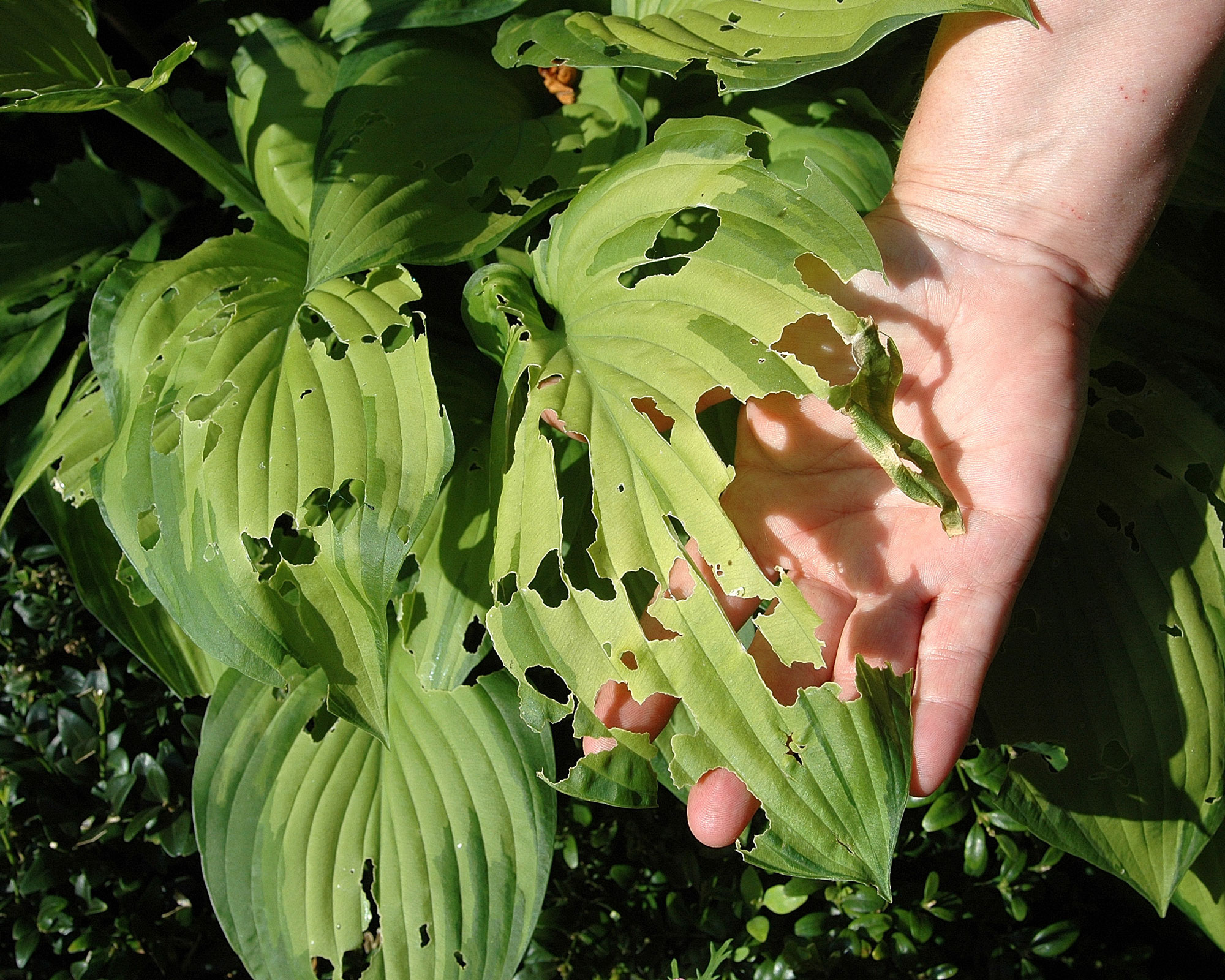
Should I mulch my hostas?
This is a controversial issue. Most gardeners are naturally inclined to consider mulching hostas to help keep the roots moist and to help prevent weeds emerging. It usually looks good, too, and it generally results in better growth.
The problem is that snails and slugs often like to hide in mulch, especially bark chip, from which they emerge at night to feed. Some experts recommend a 2in (5cm) mulch each spring, some refuse to mulch at all. Some leave a 3-4in (8-10cm) unmulched area around each hosta plant.
Personally, I believe in a fall or spring mulch, if only because it looks good. But not never more than 2in (5cm) deep, as deeper mulch can provide a home for mice.

Should I fertilize my hostas?
It is well worth fertilizing plants, especially newly planted hostas, with a liquid feed to help them establish themselves quickly. A slow-release granular fertilizer applied immediately before mulching each year will also provide plant foods during the growing season.
Hostas in garden planters, where their root growth is restricted, are especially appreciative of regular feeding and will develop into impressive specimens more quickly.

What is the most sun-tolerant hosta?
Hostas are shade-loving plants but The American Horticultural Society says: 'In general, hostas with thin leaves, especially if they have white margins, are the most likely to be damaged by sun, and those with thick foliage tend to be more resistant.'
Among the sun-proof hostas recommended by The American Horticultural Society are: ‘Blue Umbrellas’ (bluish green, giant), ‘Fried Green Tomatoes’ (green, fragrant flowers, medium), ‘Gold Edger’ (green, becoming gold, small), ‘Sum and Substance’ (chartreuse, giant) and ‘Sun Power’ (bright gold, giant).
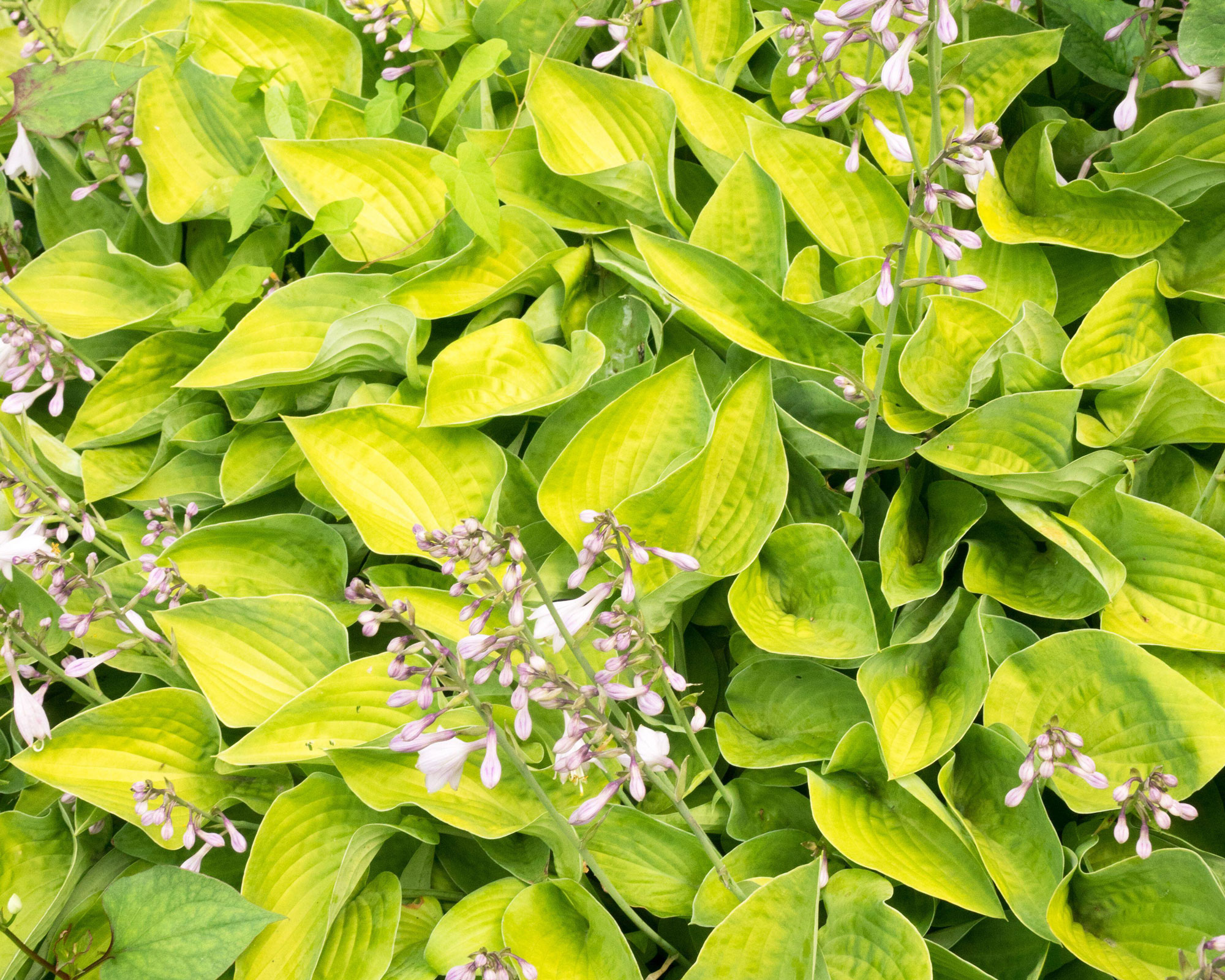
Can I grow hostas on a deck?
Hostas make superb plants to grow in containers as part of your decking ideas. At one extreme, miniature hostas are ideal on a small deck in a small yard. Where there is much more space, giant hostas can be dramatic.
It pays to match the foliage colors of your hostas with the colors of your containers. It is also important to site hostas in containers in at least some shade, to stand the container on pot feet so that the compost never becomes waterlogged, but to keep the roots moist.

What USDA zones do hostas grow in?
Hostas are very winter hardy, they will take zone 3, that is -40˚F, when they are dormant, especially if mulched, but their foliage, and especially their new growth, can be damaged by a light frost.
Planted in a container, where the roots are more exposed to cold air, hostas are zone 4 or zone 5 plants. Some people gardening in the colder zones move their hosta containers into a less icy place to protect plants from winter. Moving them against the wall of the house can help.
They do not need to be frost free, however, and should not be moved into a basement or garage where they will be too warm and may start to grow before spring arrives.
Where to buy hostas
Mail order suppliers offer hosta plants singly or in packs of three or more for ground cover use. Hostas are sold by mail order nurseries as plugs, as plants in 3in (8cm) or 41/2in (11cm) pots, two or three quart pots or some larger varieties are offered in two gallon containers.
Plugs need to be potted and grown on to a larger size before planting. Potted plants can be planted as soon as they arrive and will soon romp away.
An increasing number of states now require hostas to be shipped bare root. This means they have all the soil washed off the roots as a precaution against the spread of pests. These should be planted as soon as they arrive and may need nurturing for a few weeks. Alternatively, they can be potted and planted out later in the season.
DIY stores and retail nurseries offer plants in gallons, or sometimes in larger pots, and these are ideal for creating impact instantly.
Use our quicklinks below to start shopping for hostas.
Where to buy hostas in the US:
- Shop hostas at Amazon
- Shop hostas at Burpee
- Shop hostas at Lowe's
- Shop hostas at New Hampshire Hostas
- Shop hostas at Monrovia
- Shop hostas at Plant Delights
- Shop hostas at Walmart
Where to buy hostas in the UK:

Graham Rice is a garden writer who has won awards for his work online, and in books and magazines, on both sides of the Atlantic. He is a member of a number of Royal Horticultural Society committees and the recipient of the 2021 Garden Media Guild Lifetime Achievement Award.
